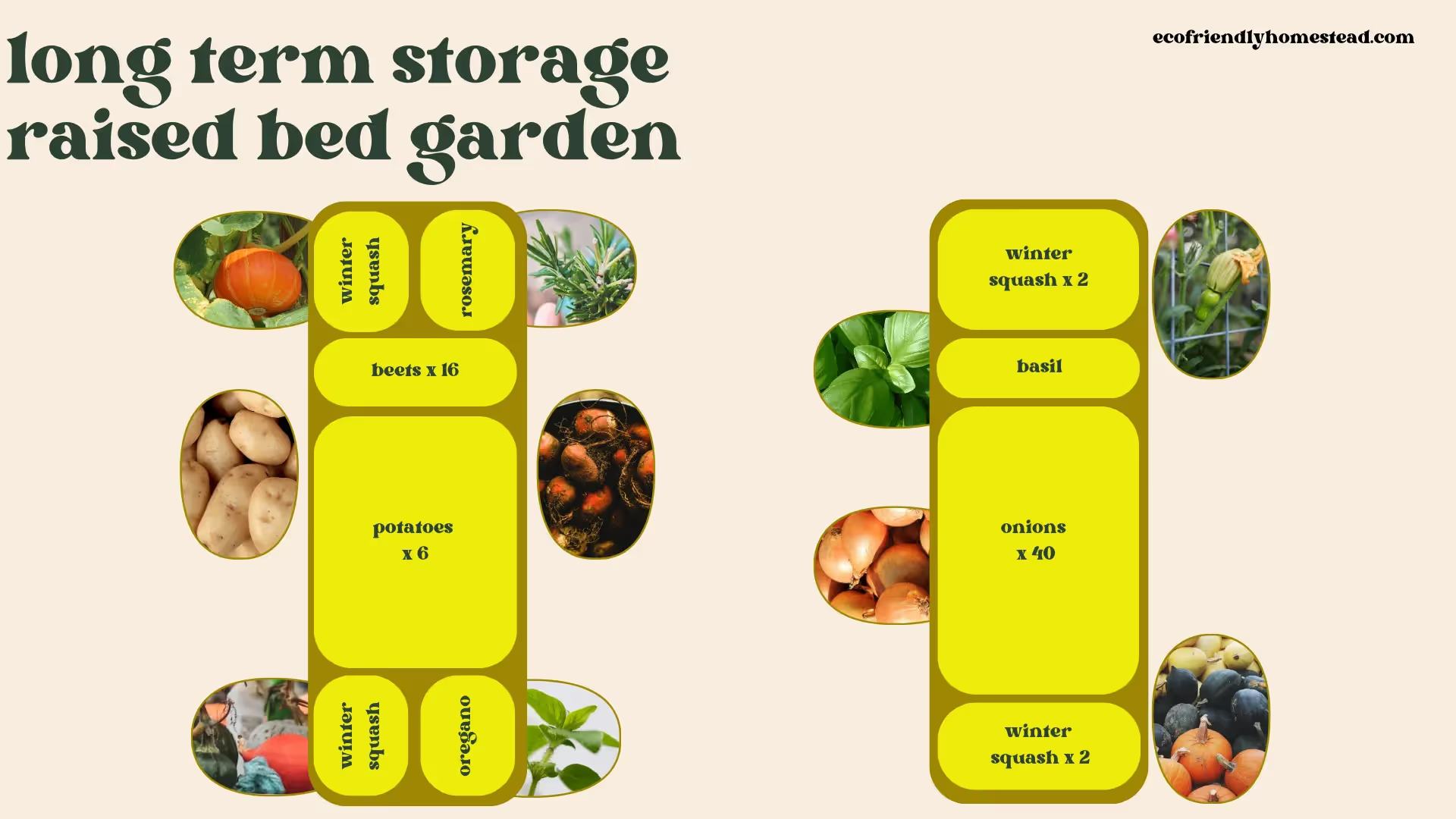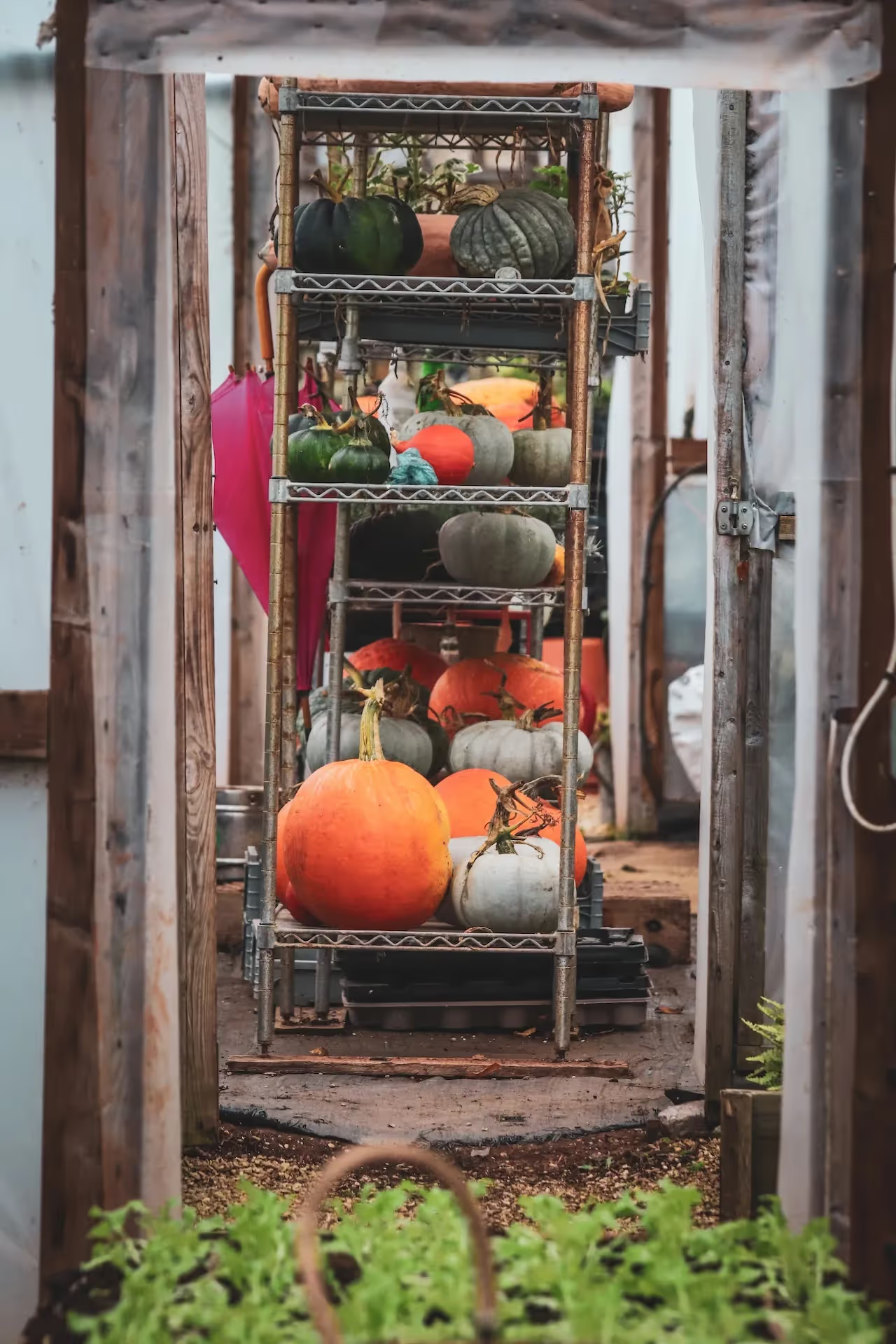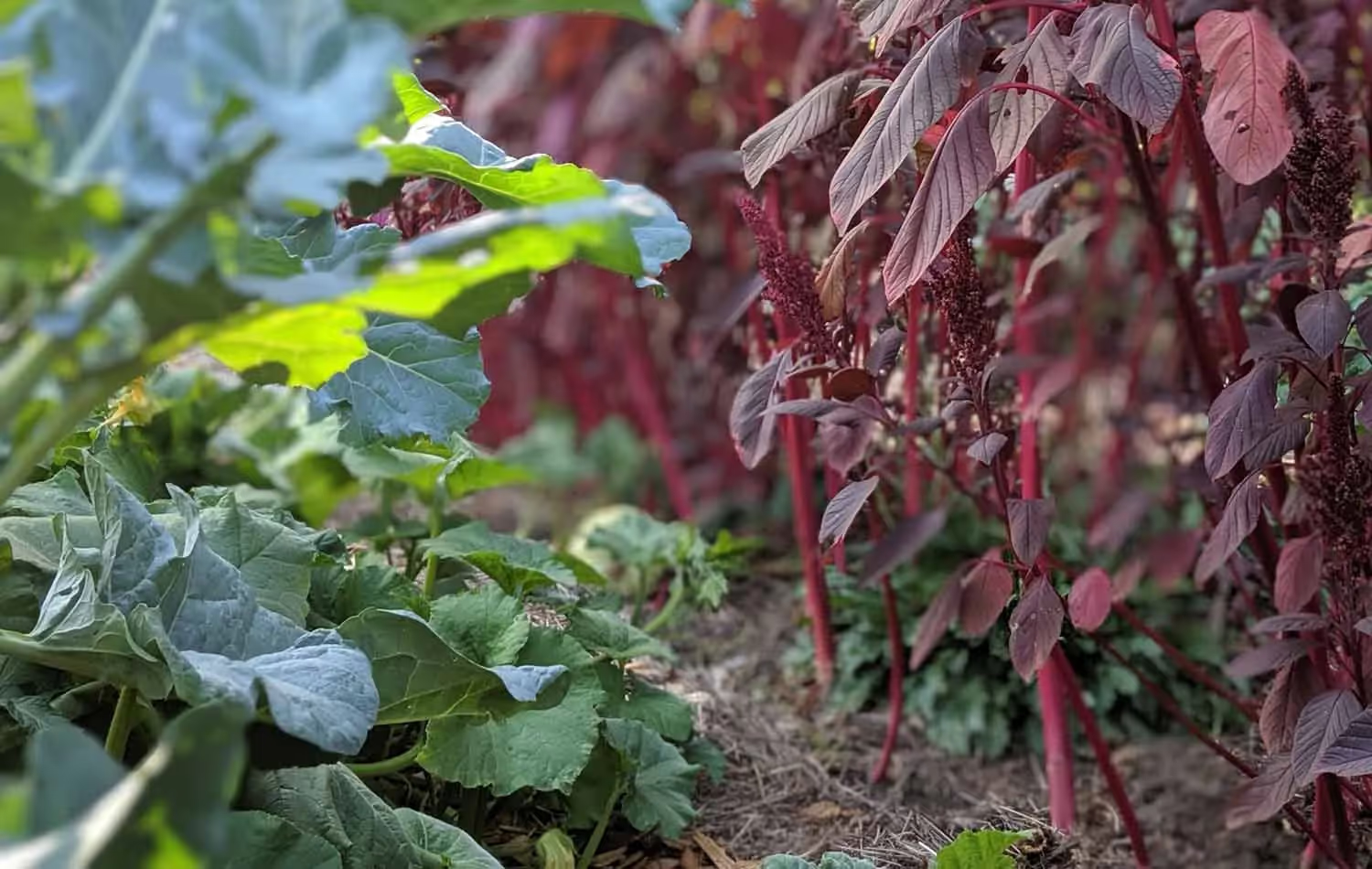
Be a Land Steward.
Sign up for Greenhouse Gases -
a weekly-ish newsletter that will teach you the science behind regenerative gardening, with action steps to help you make a difference in your backyard.

Sign up for Greenhouse Gases -
a weekly-ish newsletter that will teach you the science behind regenerative gardening, with action steps to help you make a difference in your backyard.

Winter Squash is one of my favorite crops to grow. Without much effort, they will provide food for you all winter long. After a simple curing process, winter squash will store for you for 8 months or more.
It’s no wonder winter squash was a staple crop of Indigenous Americans. From the Iroquois of New York State down to South America, winter squash has been a staple food for millennia.
While winter squash is a breeze to store, there are some tips and tricks you should know to get abundant yields.
Many of these tips involve regenerative gardening practices. This means that as you’re growing winter storage food, you’re also growing carbon storage too.
I’ll share my techniques for planting winter squash from seed to harvest, and break down the steps in this guide.

In shorter summer growing seasons, zone 7 and under, I recommend starting winter squash seeds indoors in late March or April to get a head start on the growing season.
Since many winter squash seeds take over 100 days to mature, this will help you to get an abundant harvest.
In zone 8 and above, you may wish to wait until after your last frost to direct sow squash seeds outside.
Whichever method works best for you, make sure that all of your supplies are ready, clean, and available.
If you’re starting seeds indoors, you’ll need:
If you’re starting seeds outdoors undercover, you’ll need:
If you’re starting seeds outdoors after frost and direct sowing, you’ll need:
This past year I harvested over 100 winter squash, and grew around 40 plants from seed to get that yield.

I tend to plant squash a little closer together than recommended. With added compost and organic amendments, I don’t see much of a decrease in fruit size or harvest amount.
Experiment and see what works best for your soil and the plants you choose to grow.
I plant delicata squash around 1 foot apart since it yields a smaller fruit. I plant larger squash varieties around 1.5-2.5 feet apart.
Another technique with squash involves to maximizing your garden space with edge planting.
Place squash seedlings on the edges of raised beds or rows where the plants can sprawl into pathways.
For example, if you have a raised bed that is 4 feet wide, you can plant two winter squash on one end. Then, plant the rest of the bed with other crops.

Tips for if you’re starting winter squash seeds indoors:
You’ll need to check your local weather around the time of the average last frost for your growing zone to know when to plant your squash seedlings out into your garden. The last frost date for your garden will vary from year to year, so it’s hard to be specific.
Winter Squash really do thrive in warm soil, so it’s best to wait a week or two (or more, if you can) after your last frost to ensure that cold weather doesn’t stunt your plants.
Winter Squash planting dates based on average last frost dates
Zone 2: Plant out around June 1, favor quick-maturing varieties
Zone 3: Plant out around May 25, favor quick-maturing varieties
Zone 4: Plant out around May 20
Zone 5: Plant out around May 15 or later
Zone 6: Plant out around April 30 or later
Zone 7: Plant out around April 15 or later
Zone 8: Plant out around April 10 or later
Zone 9: Plant out around March 15 or later
Zone 10: Plant out around March 15 or later
If you live in an area with a longer growing season, you can direct sow your squash seeds.
For the most part, the guidelines for sowing and transplanting squash also apply to container growing.
Here’s some guidance on how many plants to grow in your containers:

When you harvest your squash, be sure to leave as long of a stem as possible. Do not carry the squash by the stem when moving them around.
The stem will harden and protect the fruit from rot. If the stem falls off of any squash, eat them first.
Can winter squash finish ripening inside?
Yes! If you’re going to have a frost before the two qualifications for harvest are met, you want to bring the squash inside. Squash are very susceptible to frost damage.
When you harvest the squash and they are not yet ripe, be sure to leave as much of the stem as possible attached, even a leaf or two. The energy in the stem and leaves will help the squash to continue to mature inside.

Curing winter squash is simple. Even in “imperfect” conditions, I’ve had luck curing my winter squash.
Ideal conditions for curing squash:
When squash are cured in this kind of environment, they “settle,” so to speak. Their skin thickens and they become less likely to rot during the winter months in storage.
However, I have been curing my squash indoors on racks with good ventilation but little sunlight exposure. The squash keep with great success.
The temperature in my house during curing time is usually 50-60 degrees. I imagine if the wood stove is running that the air leans towards dry instead of humid.
In my experience, ventilation and dry conditions matter most. So don’t worry if you can’t check off the other factors when you cure squash.
If your winter squash leaves are healthy, trim the plant back to the base. Leave the remainder of the plant to compost in place, or bring it to your compost pile. Leave the roots behind in the ground.
If your winter squash leaves had powdery mildew, it’s best to discard the full plant so as not to spread spores. I have a “diseased and troublesome plants” compost pile in my yard where I place any plants with mildew damage.
Once your rows are cleaned up, plant a cover crop to nourish the soil during the winter months.
This study from the Rodale Institute shows that a cover crop of Hairy Vetch can reduce the intensity of powdery mildew in future crops. Even if you were lucky enough not to get PM, Hairy Vetch is still a great choice for a post-squash cover crop.
Another study out of Iowa noted that winter squash yield increased when planted after a Hairy Vetch cover crop.

Some larger varieties of squash thrive when planted three feet apart. This makes squash a great contender for interplanting.
What works well for me is to interplant squash with tall plants. Then they are not competing for space.
Also, I favor herbs or flowers that aren’t heavy feeders so that the squash can thrive.
As in the Indigenous Three Sisters companion planting, the leaves of the squash provide a living mulch for the soil. This protects other plants from heat and water evaporation.
I have had great success interplanting the following plants with winter squash:
Interplant squash with other non-curcubit vegetables or an assortment of herbs and flowers. The more diversity in your garden, the more biodiversity you build in the soil microbiome.
Herbs and flowers also bring in beneficial insects. These garden helpers support your plants as they eat pests.
Indigenous Three (and Four) Sisters Planting
Melissa Kruse-Peeples, the Educational Coordinator for Native Seeds Search, describes this important indigenous system. She explains that the Three Sisters plantings of corn, beans, and squash, began with the Haudenosaunee peoples. They are located in the Northeastern United States, surrounding the Great Lakes.
The Three Sisters is the most popular, and oldest, example of companion planting.
The corn grows tall and acts as a trellis for the beans. Beans are natural nitrogen fixers, so they add nutrients to the soil for the other crops. The squash sprawls across the soil to provide shade and prevent water evaporation.
The Three Sisters method of planting can be seen in other regions, too. The Hopi and Najavo Nation also planted these crops together.
Melissa explains that in dry areas, corn, beans and squash are planted separately to maximize the water absorption of the soil. However, the three crops are rotated in the field each year. The practice of crop rotation is another regenerative gardening method that originated with indigenous peoples.
Blue Hubbard “Trap Crop” for Squash Bugs
Usually a companion plant isn’t in the same species. And Blue Hubbard Squash is a delicious winter squash in its own right!
One method against spotted cucumber beetles, striped cucumber beetles, squash bugs and squash vine borers is outlined by the University of Missouri. These bugs prefer Blue Hubbard Squash, UoM deterred the pests away from their “cash crop” with the Hubbards.
The technique involves starting the Blue Hubbard Squash before your desired crop. Then, place the tray of the young Blue Hubbard seedlings outside, in the location where you will plant them. When you see squash bugs on the seedlings, it is time to transplant them around the perimeter of your plot.
It’s recommended to then direct sow your main squash or cucumber crop. The Blue Hubbard plants will continue to attract the bugs and you can control them in those specific spots with handpicking.
They recommend 8 Blue Hubbard Squash plants for every 100 of your desired squash plants (source).
Amaranth

Amaranth is a gorgeous plant that adds height and texture to your garden. Plus, the grains are easy to harvest and make for a delicious protein-rich side dish.
Amaranth is a great companion plant for winter squash because it attracts ground beetles, according to Mother Earth News. Ground Beetles are a predator for squash vine borers and other garden pests.
University of Wisconsin-Madison also shares that amaranth attracts another squash bug predator: tachnid flies!
In regenerative gardening, mulch is an essential component for soil health.
Mulch adds organic matter to the soil. It also prevents soil erosion, and helps maintain soil moisture.
When mulch covers the soil, the soil microbial community is able to thrive. This is because the soil won’t get dried out and the mulch provides food for microbes to eat.
Common materials for mulch are grass clippings and organic straw.
Add compost to your garden to increase soil organic matter levels. Compost also balances out the structure of both clay and sandy soils.
Compost supports your garden and the environment. According to the EPA, compost adds biodiversity to the soil microbiome. With improved water holding capacity, compost reduces water needs for your crops.
The EPA notes that compost can reduce the need for chemical inputs, such as fertilizers and pesticides.
Compost does all of that while also increasing plant vigor and harvests.
Mycorrhizae have been shown to support phosphorus uptake in squash when the soil is low in fertility.
Regenerative farming understands the importance of plant diversity, including native flowers and herbs.
Since squash are pollinated with insects such as bees, we need to plant fragrant flowers to draw their attention to our garden.
Be sure to encourage pollinators in your garden to help winter squash to set fruit and produce an improved yield.
No-till garden practices preserve soil structure, moisture, and microbial activity.
This can enhance the yield and health of the crop overall.
When soil is tilled, sequestered carbon is released back into the atmosphere.
There is an alternative to tillage. In compacted soil, use a broadfork to loosen the soil. This has worked great for my garden in the past.
Crop rotation is a regenerative gardening practice that reduces pest and disease issues.
Studies show that a 3-4 year break from certain plant families makes for healthier crops. Crop rotation avoids a lot of disease and pest issues.
Winter Squash are part of the curcubit family. Be sure not to plant it in areas where other curcubits have been recently planted. This includes:
Mulch and drip irrigation are two ways to conserve water in your regenerative garden.
Drip irrigation is another important way to save water in your garden. In fact, UMass Amherst found that you use around 80% less water when you have drip irrigation correctly in place.
Moreover, drip irrigation will help prevent wet leaves on your plants. This will reduce the amount of powdery mildew damage on your crops.
Regenerative gardening focuses on healthy soil, healthy food, and a healthy planet.
This means no synthetic pesticides or herbicides.
Synthetic inputs create soil that is void of the normal microbe-plant relationships. These chemicals are also made from petroleum products. Overall, synthetic inputs add greenhouse gases into the environment.
Your winter squash will be harvested before your first frost. After harvest, aim to plant a cover crop.
Regenerative gardening focuses on carbon sequestration in the garden. You can do this with a cover crop, which will continue the carbon storage process in your backyard over winter.
Look for varieties of cover crop that do well when sown in cooler weather.
Daikon radish can be a great choice if you noticed that your soil was compacted. Hairy vetch is a fantastic winter-sown cover crop as well that adds nitrogen to the soil. You can also plant a mix of daikon with hairy vetch to get the best of both worlds.
Avoid overwatering or waterlogged conditions that can lead to rot. Practice crop rotation and maintain good garden hygiene to prevent disease recurrence.
Heavy rainfall or extreme temperatures may also affect squash growth.
To manage pests and diseases in winter squash, it's important to be proactive.
Common pests include cucumber beetles, squash vine borers, and squash bugs.
Be observant of your plants and pick off any pests or eggs that you see.
Of course, crop rotation is another effective way to reduce the incidence of pests and disease in your garden.
Be sure to never water your squash plants overhead, which will also help reduce incidence of disease.
If you have had powdery mildew the past, try to grow a pm-resistant varieties. Honeynut butternut squash is noted for being powdery mildew resistant.
There is such a wide variety of winter squash out there - from sweet to nutty, small to extra large, there's something for almost any purpose and taste preference. Plus, with a range of colors from deep green to yellow to pink, winter squash add visual interest to your garden. I hope you'll have a go at growing this pantry staple to enjoy some homegrown food throughout the winter months.
Learn more about the different kinds of winter squash in my in-depth squash variety guide here.
Watch a squash go from seed to harvest in this visual guide to butternut squash stages of growth